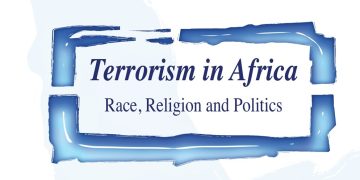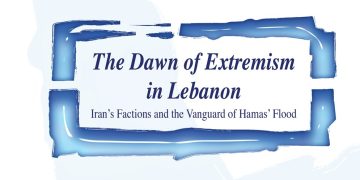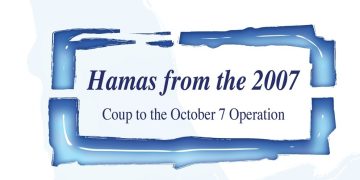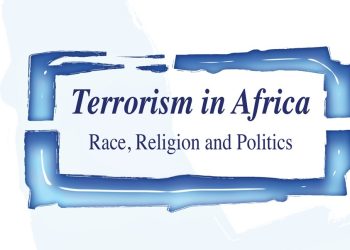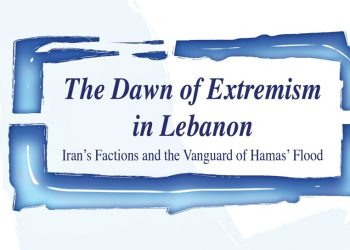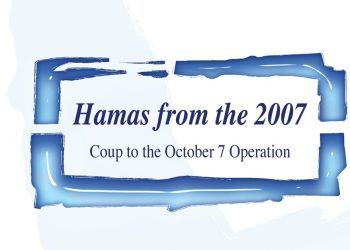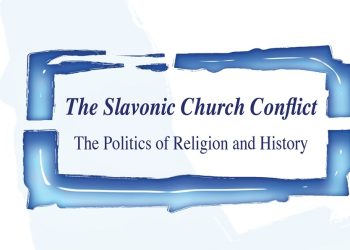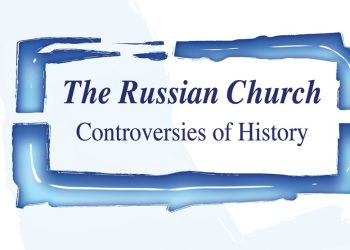In 2013, the European Foundation for Democracy published cutting edge research on Islamic policing in Europe entitled “Hisba in Europe. Assessing a murky phenomenon.” Authored by EFD’s Senior Policy Advisor, Lorenzo Vidino, the research study indicates that hisba is a relatively rare occurrence in Europe, however its mere presence makes it an issue of concern to policymakers.
In the summer of 2011, various areas of East London were flooded with bright yellow posters and leaflets with the puzzling and ominous header, “You are entering a Sharia-controlled zone – Islamic rules enforced.”[1] Posted on walls, bus stops, and poles in Waltham Forest, Tower Hamlets, and Newham — East London boroughs with large Muslim populations — the slickly designed signs also identified the allegedly prohibited activities: “No Alcohol,” “No Gambling,” “No Music or Concerts,” “No Porn or Prostitution,” and “No Drugs or Smoking.”
The leaflets were the work of Muslims Against Crusades and Islam4UK, two offshoots of the banned extremist group al Muhajiroun.[2] In typical al Muhajiroun fashion, its leaders were unapologetic about their actions and happy to receive media attention over it. Claiming that up to 50,000 leaflets had been printed, Islam4UK leader Anjem Choudary stated that the area of Waltham Forest was about to become Britain’s first “Sharia-controlled zone.” “We have hundreds, if not thousands, of people who are willing to go out and make sure our laws are obeyed,” said the London-born former lawyer. “This is the best way of dealing with drunkenness, loutishness, prostitution, and the sort of thug life you get in Britain.”[3] He also added that his group aimed at “run[ning] the area as a Sharia-controlled zone and really to put the seeds down for an Islamic Emirate in the long term.”[4]
Muslims Against Crusades leader Abu Izzadeen hinted that the initiative was just the first step of a larger campaign called the Islamic Emirates Project. “Twenty-five areas around Britain have large Muslim populations, including Bradford, Dewsbury, Leicester and Luton,” said the London-born convert Abu Izzadden, who in 2008 had been sentenced to four-and-a-half years in jail for terrorism-related offenses. “We want to turn them all into Islamic Emirates, where the excesses of Western civilization are not tolerated.”[5]
British media alarmingly reported the introduction of “Britain’s first Sharia law zone,” triggering strong condemnations from politicians and intellectuals of all political persuasions and faiths. In reality, the campaign by Islam4UK and Muslims Against Crusades, like most of the groups’ actions, were more publicity stunts aimed at attracting media attention and sowing tensions. Despite their leaders’ claims, there were no reports of any of the groups’ members — let alone the thousands of people invoked by Choudary — enforcing the dictates of the leaflets.[6] City council and police officials, together with local citizens and members of local Muslim communities, took down the leaflets, and the matter was quickly forgotten.
Nevertheless, the phenomenon of violent enforcement of an Islamic code in some areas of European cities warrants attention. In this case, it turned out to be nothing more than an empty provocation by a publicity-hungry fringe group. But, over the past few years, authorities in various European countries have witnessed limited yet worrying forms of religiously-inspired policing operated by small clusters of radicals who seek to impose their rigid interpretation of Islamic morality on local Muslim populations. There have been scattered reports, in fact, of cases in which individuals or small groups have put pressure on co-religionists to adhere to strict interpretations of Islamic law and avoid behaviors that are contrary to it. The actions of these self-appointed enforcers of Islamic morality appear to range from intimidation to actual acts of violence.
The phenomenon finds its roots in a fringe interpretation of an Islamic concept known as hisba, a doctrine based on the Quranic injunction to enjoin what is good and forbid what is wrong. Hisba is enforced with varying degrees of intensity by a variety of actors in Muslim-majority countries: Governmental or para-governmental entities forcefully reprimand behaviors considered un-Islamic and immoral, such as improper mixing of the sexes or consumption of alcohol. Whereas in some countries the state mandates such enforcement, in others the task is implemented by small groups of self-appointed enforcers of morality that act independently — triggering reactions from the state that range from acquiescence to harsh repression.
Muslim scholars have long debated various aspects of the divine command to “forbid evil,” from its range of application to its modalities. Most scholars are firm in stating that, while it is the duty of all Muslims to attempt to stop evil with words, only the established authority of an Islamic state has the duty to forcefully stop or prevent deviations from Islamic norms with force. Yet some disagree, arguing that when authorities fail to act on their duty to enforce Islamic morality, individual Muslims should act. A small number of European Islamists from various theological and political currents argue that such dynamics apply not only to Muslim-majority countries where authorities fail to enforce the sharia, but also to countries where Muslims are a minority—therefore also in Europe. It is a divine duty, argue such fringe elements, to enforce God’s laws wherever there is a Muslim community, irrespective of the political order.
The phenomenon should be put in perspective. Episodes like al Muhajiroun’s make-believe “sharia zones” have been used by some politicians and commentators as evidence of an alleged “creeping Islamization” of Europe. Having built a narrative based on alleging a threat coming from a growing and increasingly assertive Muslim population in European cities and the increasing use of Islamic law within it, some media outlets and rightwing blogs argue that cases of hisba are extremely common and that entire portions of virtually all Western European cities are sharia-controlled and de facto “no-go zones” for ethnic Europeans.
The picture painted by these voices is politically motivated and far from reality. Yet there is evidence that, in at least some parts of Western Europe, isolated individuals or small groups of radicals are indeed engaged in some forms of religious policing of local Muslim communities. Throughout the continent, in fact, there are not only individuals and organizations that, like al Muhajiroun, would like to perform forms of religiously motivated coercion, but also those who do actually engage in acts that can be described (and are seen by those who perpetrate them) as hisba.
Gauging the size of this phenomenon is a difficult task. The main reason is the reluctance of victims of these actions to report them to authorities or to speak about them, due either to distrust of mainstream media and government or fear of reprisal by Islamists. Although circumstances vary significantly from case to case, many European Muslim communities remain somewhat insular and reluctant to divulge “internal matters” to outsiders. Journalistic investigations in several countries have claimed to uncover instances of hisba, but in many cases the evidence was limited to hearsay. Moreover, in many cases, those who actually perform hisba, unlike al Muhajiroun militants, do not seek external attention or publicity and therefore keep their activities under the radar screen.
Despite the difficulty of providing even a remotely accurate assessment of how widespread the phenomenon of Hisba in Europe is, it is arguable that the phenomenon throughout Europe is quite limited, indeed existing but not on a large scale. As this article will show, while there are occasional incidents throughout the continent, assessments of the phenomenon as more than marginal are unwarranted. It is also important to note that trying to gauge the phenomenon in a continent-wide framework is not useful, as there are enormous differences from country to country and, even more importantly, from town to town.
Due to the above-mentioned reasons of marginality and difficulty in obtaining data, the phenomenon of hisba in Europe remains a relative obscure one. There are no systematic and empirical studies on the subject and only few journalistic reports — often of poor quality — on individual cases. In most cities, regions or countries where these episodes have either occurred with more frequency or have occasionally obtained media relevance, there has been a debate over the issue. But one would be hard pressed to find European authorities, at any level, that have acquired substantial knowledge of the phenomenon, let alone devised policies and practices to deal with it.
The issue has important security and social implications nonetheless. Although the phenomenon does not appear to be an extended one, the prospect of small bands of individuals seeking to establish a legal system parallel to the state’s and use violence and intimidation to enforce it should cause concern to any government. It obviously represents an infringement of the rights of those who are subjected to it and a challenge to the state’s primacy. Moreover, it can cause severe damage to the cohesion of Europe’s multicultural societies, contributing to the perception held by many Europeans that Muslims — many more of whom are victims of this phenomenon than perpetrators — do not want to integrate.
A complex phenomenon
Virtually all Islamist groups operating in Europe, whether violent or not, embrace the view that European societies are morally bankrupt and that Muslims living in them face severe challenges in not falling into the traps of sexual promiscuity, drinking, gambling, and other un-Islamic behavior. Islamists urge European Muslims to behave ethically and in accordance with the tenets of sharia, even as they live in a secular, non-Muslim majority society. Many organize conferences and disseminate lectures guiding European Muslims and seeking to address them on the path of good and away from that of sin — the core of hisba. Missionary groups like Tablighi Jamaat circulate within Muslim communities throughout Europe “commanding good,” hoping that this effort will motivates Muslims to refrain from “committing evil.” Yet throughout Europe, small numbers of individuals and groups do believe that it is their duty, even in the absence of an established Islamic authority, to enforce coercive hisba and violently punish those Muslims who violate Islamic law.
Hisba can been defined, for the purpose of this article, as the action taken by individuals or groups of Islamist persuasion to coerce fellow Muslims to abide by the tenets of the sharia. To be clear, the functionality of Islamist-enforced hisba in Muslim-majority countries is barely replicated in Europe — and only in a substantially reduced form within a few areas.
It is possible to identify three forms of hisba in Europe: organized, spontaneous, and “borderline hisba.” Organized hisba takes place when small groups of activists decide to intimidate segments of the local Muslim population, threatening and occasionally meting out punishments for those who violate sharia tenets. Verified episodes of organized hisba in Europe are few and far between. One took place in the 1990s around London’s Finsbury Park mosque. Originally founded as a mainstream, moderate mosque for the large Muslim community of north London, Finsbury Park was taken over by the notorious Egyptian cleric Abu Hamza al Masri and a small group of followers in the mid-1990s.[7] After intimidating the mosque’s trustees, Abu Hamza turned the place into what intelligence agencies from various countries at the time considered the undisputed headquarters of jihadist activities in Europe.
In addition to their terrorism-related activities, Abu Hamza and his closest followers also enforced forms of hisba in the immediate vicinity of the mosque. According to senior British counterterrorism officers and local residents, from the late 1990s until his arrest in 2004, Abu Hamza and his men pressured Muslim barbers to not give “inappropriate haircuts;” Muslim newsagents to not display or sell “immoral publications;” and Muslim restaurant owners to not serve alcohol.[8] It is unclear whether Abu Hamza and his followers ever physically attacked anyone who disobeyed their orders, but there is no question that the men, most of whom were veterans of combat in Algeria, Afghanistan, and Bosnia, waged a widespread and compelling intimidating campaign. (To be clear, even the actions of Abu Hamza’s followers in the London of the 1990s pale in comparison with those carried out by the members of the Gamaa Islamiya in Egypt, for example.)
A more common phenomenon in Europe is spontaneous hisba. Spontaneous hisba takes place when an individual or small group of individuals engages in the coercive enforcement of sharia norms without premeditation or organization. These instances occur when a given individual or small group, coming up behavior they deem un-Islamic, decide to take coercive action. The individuals performing spontaneous hisba may have varying degrees of involvement with Islamist groups and knowledge of the concept of hisba, yet decide to take the matter into their own hands. Unlike those performing organized hisba, they do so at the spur of the moment and generally not systematically.
Occasional episodes of spontaneous hisba are relatively common in most European countries, but the London borough of Tower Hamlets provides a useful example. Located in the eastern part of the city, Tower Hamlets is home to one of Britain’s largest Muslim communities (36 percent of the borough, mostly of Bangladeshi descent) and, at the same time, several groups of various Islamist persuasions.[9] Over the last few years, authorities in Tower Hamlets have witnessed several incidents that could be characterized as spontaneous hisba:
In 2008, a 20-year-old patron of the George and Dragon, a local gay pub, was attacked by a group of young Muslims outside the pub and left permanently paralyzed. In 2010, the pub itself was stormed by a mob of some 30 Muslims, who attacked the patrons. The attacks were part of a wave of anti-gay activities in the borough. In 2011, police arrested a local Muslim man who was found in possession of stickers that had been posted throughout the area. The stickers called the borough a “gay-free zone” and stated that “verily Allah is severe in punishment.”[10] The man, who pleaded guilty to a public order offense, included among his “interests” on Facebook Khalid Yassin, a preacher who had often spoken at Tower Hamlets’ East London mosque and called for the killing of homosexuals.
In July 2010, four local Muslim residents attacked Gary Smith, the head of religious education at Central Foundation Girls’ School, with a Stanley knife, an iron rod, and a block of cement, slashing his face and fracturing his skull. The police had made secret recordings of the men’s plans and heard them say they wanted to attack Smith for “teaching other religions to our sisters.” At the trial, the prosecution alleged that the evidence “points overwhelmingly to a religious motive for this attack.”[11] In sentencing them to at least 19 years in jail, the judge told the men: “Your belief is that you carried out a duty to your God and you did so with no mercy.”[12]
During Ramadan 2010, a Bangladeshi man, Mohammed Monzur Rahman, was severely beaten by a mob of Muslim men in the Shadwell section of Tower Hamlets for smoking at a time when Muslims are not supposed to.[13] “Two guys stopped me in the street and asked me why I was smoking. I just carried on, and before I knew it, another dozen guys came and jumped me,” recounted Rahman. “The next thing I knew, I was waking up in a hospital.”[14]
In April 2011, the owner of a local pharmacy was threatened because one of his employees, a young Asian woman, did not wear the veil. The owner was first approached by a man in his forties who said that “if she keeps working here and continues to dress like that, we will boycott you because this is a Muslim area.” Later, a younger man entered the store and shouted at the woman: “If you keep doing these things, we will kill you.” Several other women, including local Muslim councilor Shiria Khatun, have been subjected to similar pressure and intimidation for not wearing the veil, or for wearing Western clothes.[15]
Episodes similar to those that have taken place in Tower Hamlets have been witnessed, albeit in most cases with less frequency, in several parts of Western Europe. Attacks on gays; individuals who are seen as “attacking Islam” or seeking to convert Muslims; Muslims who do not observe the fast of Ramadan; and women who do not adopt conservative Islamic attire are some of the most common manifestations of hisba (or, at least, of a fringe interpretation of the concept) in Europe. In some cases, hisba is performed through a campaign of threats and intimidation, in some cases with actual violence. Either way, these are episodes in which individuals seeking to implement their version of the sharia deprive fellow European Muslims or non-Muslims of their freedom, rights, and physical security.
The individuals behind these acts tend to be young men who are members, sympathizers, or consumers of the ideas of various Islamist groups. Most of these Islamist groups stop short of urging Muslims to physically “correct” behavior they deem immoral, but it is easy to see how certain individuals, imbued with such ideology, might take it upon themselves to do so. In substance, there seems to have been no organized group in Tower Hamlets or in most European cities going around practicing hisba as Abu Hamza and his followers did in Finsbury Park in the 1990s.[16] But Islamist ideological narratives that strongly condemn the same behavior are quite widespread, and occasionally motivate individuals to act when confronted with the opportunity.[17]
Is it accurate to characterize these incidents as proper hisba? It can be legitimately argued that other factors might motivate the actions of the men behind them, at least partially. Some argue that culture, rather than a strict interpretation of religion, might be the motivation behind some of them. It is true that most European Muslims come from a very conservative culture and attacks against homosexuals, for example, could be a degenerative manifestation of that cultural background rather than a strict interpretation of Islamic law or enforcement of hisba. And indeed, homophobic attacks are hardly unique to Muslims, and are also perpetrated by rightwing militants and individuals with no particular political or religious conviction.
Throughout Europe, in numerous neighborhoods with a substantial Muslim population, there is social pressure to conform to conservative norms. Women not wearing conservative attire, homosexuals and Muslims who drink or do not fast during Ramadan are often the first victims of this pressure. It can manifest in “dirty looks” and offensive comments, as well as physical threats and occasionally violence. Is this hisba? Or is it a manifestation of a conservative culture, of which religion is just a component? Pressure to conform to conservative mores is hardly unique to the Muslim population, and in Europe, some other immigrant communities also exert it to some degree.
How to regard these “borderline phenomena” is an open question. In January 2009, Norway’s largest newspaper, Aftenposten, published an extensive investigative report about the presence of what it called “morality police” in the Oslo neighborhood of Grønland.[18] The impetus for the article was an attack on a gay couple by conservative Muslims in the predominantly immigrant neighborhood. Journalists interviewed several local residents and community leaders. Most agreed that occasionally, individuals or small groups of men, mainly from the Somali and Pakistani community, perpetrated “public attempts at social control.” Yet in the Norwegian public discussion that ensured, many criticized what they perceived as an attempt to demonize an entire community, and sought to characterize such behavior not as religiously motivated but rather simply as inappropriate manifestations of social conservatism.[19]
Throughout Europe, it is not uncommon to find cases of individuals of Muslim backgrounds carrying out violent acts that are portrayed by the media and commentators as motivated by a fundamentalist interpretation of Islam. At times, incidents of coercive behavior adopted by some European Muslims, such as forced marriages and “honor killings,” are characterized as motivated by extremist religious views and even portrayed as forms of religious policing. How much these phenomena are motivated by religious views and how much, on the other hand, by cultural factors, remains highly debated. In any case, it is incorrect to identify these behavior as hisba.
Similarly, many have expressed concerns over the advent of Islamic courts in Europe. In some countries, including Great Britain, Islamic arbitration courts are recognized by the government and voluntarily accessed by those who want to solve certain issues according to Islamic law. In many European countries there are reports of informal “courts” or mediators that help Muslims solve civil matters and, in some rare circumstances, judge on criminal matters, operating outside of the law of the country.[20] While in some circumstances there might be some overlap, the activities of these courts cannot be qualified as hisba as previously defined.
Other phenomena, while still borderline, are closer to being properly characterized as hisba. In several neighborhoods of European cities with large Muslim populations, it is not uncommon for advertisements displaying naked or scantily clad bodies to be ripped, blacked out, or covered up. Newspapers in the UK, for example, have reported that the occurrence is quite common throughout the country.[21] The same phenomenon has been reported in the Netherlands. In 2012, Radio Netherlands reported that in Kanaleneiland, a predominantly Muslim area of Utrecht, a poster had been covered by a black bag. A message plastered across the bag read “La ilaha illa ‘l-llah [There is no God but Allah] – No Sexually Tinted Advertising In Our Suburbs. Stand Up And Fight Against This Case To Protect Our Children!”[22] Is the phenomenon just cultural? Or is it religious and therefore hisba? And is it possible (or useful) to completely distinguish the two components?
Another phenomenon difficult to categorize is religiously motivated vigilantism. In several neighborhoods of European cities with a high percentage of Muslim residents, there have been instances in which groups of Muslim men, often from the same mosque, form vigilante groups with the aim of maintaining law and order in their crime-ridden area. The dynamics of this phenomena vary from case to case and should be assessed individually — but in most cases these vigilante groups seek to target activities that are both illegal and religious proscribed. In most cases they chase drug dealers, prostitutes, and gangs out of their neighborhood, bringing order back to the area.
As with any vigilante group, authorities tend to have mixed feelings about these initiatives, mostly depending on the methods used by the group. If the patrols limit their actions to reporting crimes and cooperates with police, their actions are perceived as laudable examples of successful police-community cooperation. But authorities tend to be wary of groups that presume to supplant police and take the law into their hands.[23] There is an additional concern related to religiously tinged vigilantism. Some patrols may target not only behavior that is both illegal and religiously proscribed but also some that is religiously proscribed yet legal. There have been reports in various northern English towns, for example, of Muslim vigilante groups ,led by individuals with an Islamist background, targeting not only drug dealers and prostitutes but also legitimate businesses that were selling alcohol or hosting gambling. While every situation needs to be evaluated individually, the line between vigilante and hisba group may be a fine one.
A similar phenomenon became sadly known to the British public in the wake of the July 7, 2005 attacks in London. Police and journalistic investigations revealed that three of the four suicide bombers had belonged to a vigilante group that had formed years earlier in the dilapidated Leeds suburb of Beeston. Mohammed Siddique Khan, the attackers’ ringleader, was one of the leading members of a group of mostly second-generation Pakistanis who called themselves the “Mullah Boys.[24]” Some 15 to 20 individuals belonged to the group, which had come together to fight the presence of drugs in the neighborhood. Its members would chase drug dealers out of the area and carry out “cold turkey” drug interventions — kidnapping young Muslims who were addicted to drugs, with the consent of their families, and holding them in a flat near their Salafist-leaning mosque until they had cleansed them of their drug addiction. The group soon outgrew its religiously tinged neighborhood watch purpose, and some of its core members became involved with jihadist activities.
Finally, a separate phenomenon the relationship of which to hisba is unclear is that of al-Muhajiroun spinoffs’ publicity stunts. There have been a handful of episodes in which groups that gravitate to the ideological orbit of the now-defunct group and, more loosely, to that of Hizb ut Tahrir, have publicly announced their desire to enforce sharia law in certain urban areas with a large Muslim population. Similarly to the above-mentioned Islamic Emirate Project in Great Britain, for example, a group in Denmark calling itself Call to Islam, in the fall of 2011, announced its plan to introduce patrols of areas of Copenhagen in order to prevent local Muslims from engaging in “un-Islamic behaviors.”[25]
There is no question that these initiatives fall under the realm of hisba from the theological vantage point of their promoters. But in most cases, these initiatives were little more than hollow proclamations designed to attract media coverage. There is hardly any evidence that these groups followed up on their promises and carried out any hisba. It can be said that, somewhat paradoxically, groups that have loudly proclaimed their intention to carry out hisba have not performed it, while those who actually carried it out have denied doing so and eschewed media attention.
In sum, incidents of hisba do exist but are often either under- or over-reported. Law enforcement officials, politicians, journalists, social workers, and community leaders in various European countries who were interviewed for this study have repeatedly expressed the view that in many Muslim communities hisba is a poorly kept secret: Most people are aware that it happens on some scale but few if anyone reports it, mostly for fear of retribution or out of a desire to avoid shaming the community. One official compared the phenomenon to the omertà that surrounds the activities of the mafia in portions of southern Italy.
On the other hand, it is not rare that certain incidents involving the Muslim community are erroneously categorized as instances of “religious policing” or “sharia enforcement,” either out of their proper context or based on questionable evidence. Whether this poor reporting stems from superficiality or political motivation varies from case to case — but the general trend is to view most episodes of violence perpetrated by Muslims, aside from terrorist acts, as a manifestation of hisba.
* * *
All caveats aside, it is nonetheless apparent that forms of coercive hisba do exist in Western Europe. The phenomenon is a twofold problem. The first, direct victims of coercive hisba are European Muslims. Irrespective of whether coercive hisba is performed through social pressure or actual violence, instances in which individuals seek to deprive fellow European Muslims of their freedoms, rights, and in the most extreme cases, their physical security, are deeply troubling.
But the phenomenon of coercive hisba can trigger a second negative impact. Episodes of hisba — whether real, misconstrued, or imagined — have often been used by various populist forces to make their case that European Muslims do not want to integrate into mainstream society. Paradoxically, an occurrence in which a small extremist minority seeks to coerce the broader Muslim community is used to make the case that the entire Muslim population harbors radical views. This somewhat perverse conclusion represents a more indirect, yet potentially serious implication of the presence of hisba in Western Europe.
For these reasons, it is advisable that authorities throughout Europe familiarize themselves with the issue in all its subtleties. (Local police forces, social workers, and teachers may come upon the problem in various ways without recognize it.) Outreach to Muslim communities is vitally important. Building trust-based relationships with citizens and community leaders would likely increase the likelihood that they report cases of hisba. Avoiding stigmatization and ensuring that European Muslims feel that the state views them as regular citizens who need and deserve protection is crucially important.
[1] Rebecca Camber, “‘No porn or prostitution’: Islamic extremists set up Sharia law controlled zones in British cities,” Daily Mail, July 28, 2011.
[2] For a relatively comprehensive and updated history of al Muhajiroun and its spinoffs, see Catherine Zara Raymond, Al Muhajiroun and Islam4UK: The Group Behind the Ban, International Centre for the Study of Radicalisation and Political Violence, May 2010.
[3] Sue Reid, “As Islamic extremists declare Britain’s first Sharia law zone, the worrying social and moral implications,” Daily Mail, July 29, 2011.
[4] Rebecca Camber, “‘No porn or prostitution’: Islamic extremists set up Sharia law controlled zones in British cities,” Daily Mail, July 28, 2011.
[5] Sue Reid, “As Islamic extremists declare Britain’s first Sharia law zone, the worrying social and moral implications,” Daily Mail, July 29, 2011.
[6] Interviews with various law enforcement and local officials, London, July and October 2012.
[7] Sean O’Neill and Daniel McGrory, The Suicide Factory: Abu Hamza and the Finsbury Park Mosque (London: Harper Collins, 2006), pp. 34—52.
[8] Interview with Bob Lambert, July 2012; interviews with local residents and business owners, London, October 2012.
[9] Focus on Ethnicity and Religion, National Statistics, 2006. Page 66.
[10] Andrew Gilligan, “Police ‘Covered up’ Violent Campaign to Turn London Area ‘Islamic’,” Sunday Telegraph, June 12, 2011.
[11] “Four Men Slashed Teacher’s Face and Left him with Fractured Skull for ‘Teaching other Religions to Muslim Girls’,” Daily Mail, February 22, 2011.
[12] “Battered and slashed by a Muslim gang just because he taught RE: Four jailed over their ‘dangerous extreme religious beliefs’,” Daily Mail, May 27, 2011.
[13] Interview with Ansar Ahmed Ullah.
[14] Andrew Gilligan, “Police ‘Covered up’ Violent Campaign to Turn London Area ‘Islamic’,” Sunday Telegraph, June 12, 2011.
[15] Tom Rawstorne, “Tower Hamlets Taliban: Death Threats to Women who Don’t Wear Veils. Gays Attacked in the Streets. And All in the Borough at the Heart of Britain’s Capital,” Daily Mail, May 13, 2011.
[16] Abid, Geraint, Lambert
[17] Ansar, Usama Hassan
[18] Stein J. Bjørge, “Moralkontroll i Oslos innvandrergater,”Aftenposten, January 9, 2010.
[19] Sindre Bangstad, “The morality police are coming! Muslims in Norway’s media discourses,” Anthropology Today, Volume 27, Number 5, 1 October 2011 , pp. 3-7.
[20] See, for example, the German case: Joachim Wagner, “Islamic Mediators and Germany’s ‘Two Legal Systems’,” Der Spiegel, June 20, 2012.
[21] “Censored! Bikini advert blacked out with spray paint by ‘Muslim extremists who object to women in swimsuits’,” Daily Mail, May 13, 2011.
[22] Jannie Schipper, “Muslim censorship or just plain decency?” Radio Netherlands Worldwide, April 14, 2012.
[23] For an example of these dynamics see “Residents Tackling Drug Dealers,” BBC News, August 27, 2008; confirmed in email exchange with Greater Manchester Police’s Public Relations Office, July 2012.
[24] Shiv Malik, “My Brother the Bomber,” Prospect Magazine, Issue 135, June 2007.
[25] Line Prasz, “Borgmester: Sharia-zoner er uacceptable,” Politiken, October 18, 2011; “Islamister vil indføre sharia-zoner i København,” Jyllands-Posten, October 17, 2011.


